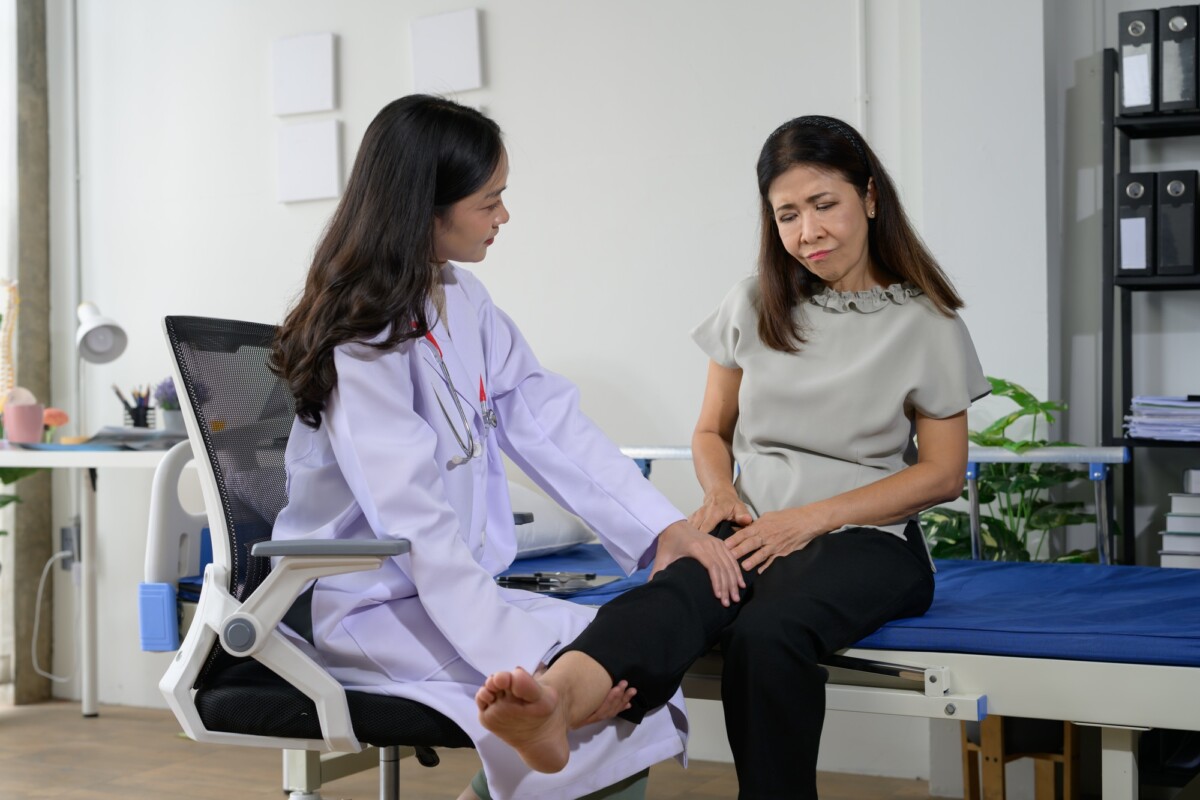Knee Support for Osteoarthritis: Top Picks Backed by Experts
[tta_listen_btn]
Osteoarthritis (OA) is one of the most common degenerative joint diseases, especially among adults aged 50 and above. It typically affects weight-bearing joints like the knees, where cartilage wears down, resulting in pain, stiffness, and swelling. As the cartilage thins, bones may rub against each other, leading to further deterioration and chronic discomfort. In 2025, nearly 32 million adults in the U.S. are affected by OA, with knee osteoarthritis being the most prevalent form. It limits daily activities, affects mood and mobility, and has a direct impact on quality of life. That’s where knee support for osteoarthritis becomes not just helpful, but essential.
The Role of Knee Support for Osteoarthritis
How Knee Braces Help With Osteoarthritis
Knee braces, sleeves, and supports are designed to stabilize the joint, reduce pressure, and align the bones and muscles around the knee. Minimizing the load on the affected area helps reduce pain and delays further joint damage.
Types of Knee Support Options in 2025
The market has evolved significantly. From simple elastic sleeves to tech-enhanced braces, users now have more choices than ever:
-
Compression Sleeves
-
Hinged Braces
-
Unloader Braces
-
Wraparound Supports
-
Custom-Made Knee Braces
Each has its own pros and cons depending on the stage and severity of your osteoarthritis.
Choosing the Right Knee Support
Selecting the right knee support depends on factors such as:
-
Degree of pain
-
Joint stability
-
Daily activity levels
-
Body shape and fit preferences
-
Insurance coverage and budget
Consulting with an orthopedic specialist is always advised before making your final decision.
Top 5 Best Knee Supports for Osteoarthritis in 2025
1. Compression Sleeves
Compression sleeves are lightweight, easy to wear, and made of flexible materials like neoprene. They’re ideal for early-stage OA, providing warmth, mild support, and increased blood flow to reduce stiffness.
Pros:
-
Affordable
-
Comfortable for all-day wear
-
Ideal for mild osteoarthritis
Cons:
-
Less support for severe instability
2. Hinged Knee Braces
These braces feature side hinges to allow controlled knee movement while stabilizing the joint. They’re perfect for moderate to severe OA cases and for those engaging in active movement.
Pros:
-
High support level
-
Prevents hyperextension
-
Great for athletes with OA
Cons:
-
Bulky underclothing
3. Unloader Braces
Unloader braces are designed to shift pressure from the damaged part of the knee to a healthier area, providing targeted pain relief. They’re commonly prescribed for patients with compartmental osteoarthritis.
Pros:
-
Reduces joint stress
-
Significantly alleviates pain
-
Customizable for each patient
Cons:
-
Expensive
-
Takes time to get used to
4. Wraparound Supports
These provide moderate support with adjustable straps, which are suitable for users who need flexibility with firm compression.
Pros:
-
Adjustable fit
-
Mid-level support
-
Easy to wear
Cons:
-
May loosen over time
5. Custom Knee Braces
Made to fit your exact knee anatomy, these are highly effective but come at a premium price.
Pros:
-
Maximum support and alignment
-
Personalized fit
-
Covered by insurance in some cases
Cons:
-
Costly and requires fitting sessions
Benefits of Knee Support for Osteoarthritis Sufferers
Pain Relief and Pressure Distribution
The #1 reason people use knee support is pain relief. By distributing the weight more evenly across the knee joint, the brace can reduce pressure on the most affected areas.
Improved Mobility and Confidence
Stabilizing the knee reduces the fear of the joint giving out, helping patients walk, exercise, and participate in daily activities with more confidence.
Enhanced Muscle Support and Joint Alignment
Many knee supports offer added muscle support and aid in keeping the joint aligned, which helps prevent further degeneration and slows the disease’s progression.
When to Use Knee Support and When to Avoid It
Signs You Need a Brace
-
Persistent knee pain
-
Swelling and inflammation
-
Joint instability or buckling
-
Post-surgical recovery
-
Difficulty walking or standing for long periods
When to Avoid Knee Bracing
-
Skin sensitivity or open wounds around the knee
-
Severe misalignment needing surgery
-
Dependency without strengthening the surrounding muscles
Always balance brace usage with physical therapy and strengthening exercises.
Physical Therapy and Knee Support: A Winning Combo
Using a knee support alongside physical therapy is a winning combination. While the brace offers immediate relief, physical therapy strengthens the muscles that support the joint long-term.
Common therapy activities include:
-
Quadriceps strengthening
-
Balance and coordination training
-
Low-impact cardio like swimming or cycling
Wearing Tips for Maximum Effectiveness
-
Measure Correctly: Get accurate sizing to ensure proper support
-
Wear During Activities: Use the brace during high-stress movements like walking, running, or lifting
-
Avoid Overuse: Give your knee time to move naturally without support to prevent muscle weakening
-
Check for Irritation: Skin rashes or discomfort can be a sign that the brace doesn’t fit properly
Potential Drawbacks and How to Overcome Them
While beneficial, knee braces aren’t perfect. Potential issues include:
-
Over-reliance leading to weakened muscles
-
Improper fit causing discomfort
-
Restriction in movement
To address these, consult with a physiotherapist for a balanced use plan and integrate muscle-strengthening exercises into your routine.
What the Latest Research Says in 2025
According to a 2025 study from the Journal of Orthopedic Advances, patients using unloader braces showed a 42% improvement in pain management and functionality over a 12-week period. Another study by the American Academy of Orthopaedic Surgeons highlights that combining bracing with physical therapy can delay the need for surgery by up to 3 years.
For further updates and reliable information, check out the Arthritis Foundation for evidence-based resources.
Frequently Asked Questions (FAQs)
Should I wear a knee support with osteoarthritis?
Yes, many individuals with OA find relief and improved mobility using a knee support. It’s especially helpful during physical activity.
What should I wear for osteoarthritis in the knee?
Compression sleeves or unloader braces are great options, depending on your pain level and mobility needs.
What is the best thing for osteoarthritis in the knee?
A combination of knee support, physical therapy, weight management, and anti-inflammatory treatments typically provides the best results.
What is the #1 mistake that makes bad knees worse?
Avoiding exercise and relying solely on pain medication. Lack of movement weakens muscles and worsens joint function over time.
Can knee support replace surgery?
In some moderate cases, yes. Bracing, when used early, can delay or avoid the need for surgical intervention.
How long should I wear a knee brace each day?
It depends on your activity level. Many wear it during exercise or extended movement and take it off when resting.
Final Thoughts
In 2025, managing osteoarthritis of the knee doesn’t mean resigning yourself to constant pain or surgical intervention. With the right knee support for osteoarthritis, many people can regain control of their movement, reduce discomfort, and live a more active, independent life. From compression sleeves to custom braces, the choices are broader—and better—than ever.
The key is to combine supportive devices with physical therapy, healthy lifestyle habits, and regular check-ins with your doctor. Don’t wait until the pain gets unbearable—explore your support options today and step into a more comfortable tomorrow.
Looking for Medicare made easy? Start with a free quote at NewMedicare.com or dial 📞 (833) 203-6742!






